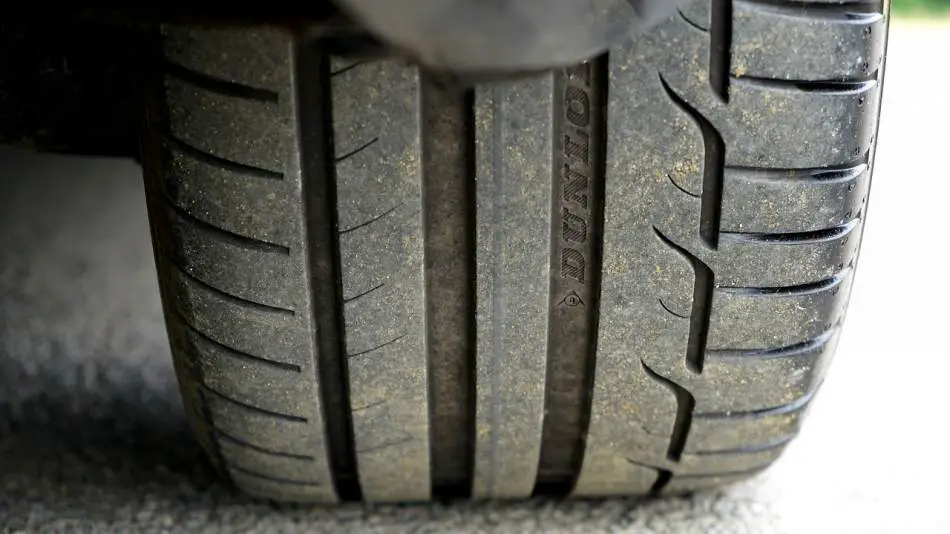
Using the correct tire pressure for your Prius will provide you with the best comfort possible. The manufacturers want you to be satisfied with the ride. At the same time, they suggest tire pressure that will get you adequate miles per gallon. They could increase the miles per gallon by recommending a higher psi, but the customers would be less ok with the comfort level of the Prius which could affect sales in the long run.
Best Tire Pressure for Prius? The best tire pressure for a Prius is 36 psi for the front rims that are 15 inches. For the back tires for 15-inch rims, the recommended psi is 35 psi. For a Prius that has 17-inch rims, the front tires should be set at 32 psi, and at 30 psi for the rear rims. You can double-check the psi recommended in your manual or by looking at the sticker on the inside of the driver’s door.
For the driver’s door, there is a recess at the bottom of the door where the maximum psi is written. This amount is usually low, but personally, I would try a higher than the recommended amount for the PSI. If you are interested in maximizing mpg, you could increase that amount by inflating more your tires. Do so at your own risk since it is suggested that you follow the instructions in the manual.
If you try to use the recommended psi and there is a flashing light for the tire pressure indicator, what is happening?
Why is the Prius tire pressure light blinking?
If your Prius tire pressure sensor light is flashing or blinking, it is likely that one or more of your tires is low in pressure. It is best to get off the road and to check the pressures. Make sure that you use a sensor that is not super cheap so that you get an accurate reading. I read about one customer that was getting the flashing light and that when he checked the tires, he felt that the pressure was great for the four tires. Perhaps his device for checking tire pressure was off.
I recommend the AstroAI digital tire pressure gauge that has a backlit LCD. Check the pricing on Amazon.
Once you have checked the pressure and you have increased the tire pressures, you should reset the sensor. To do so, there is a button on the steering column on the Prius to reset the device.
Also, if your light is solid, there is a chance that there has been a communication break with the tire pressure sensor. A flashing light means that the sensor is actually communicating well with the tires.
If you are experiencing a lot of problems with your TPMS, and you have checked the tires with a good gauge that you can trust, it might be time to check the batteries of the sensors. It is rare that the batteries will die because they tend to last as much as ten years in a Prius. Nevertheless, it is best to try to solve the problem on your own before going to an unknown shop. Some shops will just order expensive parts to replace that will solve the problem but not at the lowest cost for you personally.
One owner suggested that you could not stop the flashing sensor light, that you could just deactivate it. You just go into the software with a mini VCI and turn off the sensor. This seems extreme to me because if you have a slow leak that leads to a flat, you will never know until you are at the side of the road nursing a flat tire.
If you want to look into the pricing on Amazon for a Bosch OBD Scan Tool that is compatible with hybrids, click here. It will give you live data and it can erase DTCs.
If you would rather go the route of the dealer, perhaps just ask them to switch out the sensors on your next trip to the shop. It might decrease the labor cost that is involved.
To really troubleshoot, you need to know the ins and the outs of the sensors. I will explain in detail how they function on the Prius.
How the Prius Tire Pressure Sensor works
The Prius tire pressure sensor will monitor all four tires and then let you know if one or more of the tires is low on pressure. The best of the best of TPMS sensor will even tell you which tire is triggering the warning light, but not with the Prius, There will be a yellow icon that appears that has an exclamation mark in the middle of it. It will appear above the odometer.
Just as a side note, the sensor might go off if you just had your tires rotated or you had changed the tires to a different size. In these, check the pressures and then turn off the warning light
This is done by following these steps for the newer version of Prius:
- Turn on the engine
- Press the D-pad on the steering wheel, and scroll to vehicle settings
- Go to the maintenance system.
- Push and hold the zero button on the D-pad.
- This will initialize the TPMS for you.
- Now once you drive the vehicle it will record the proper values for the tire pressure.
If you have an older Prius, there is a button that you can press and hold to initialize the TPMS, here are the steps for the Prius 2011-2015:
- The button is below the steering wheel. It has the icon representing a tire pressure problem and the word ‘reset’.
- Press and hold in the button and then wait for it to blink.
- Now restart your car and the TPMS warning light should now be turned off.
Is 40 PSI a good tire pressure for a Prius?
If you wish to try a higher than recommended tire pressure amount for your Prius, it will increase your mpg, but the ride will not be as smooth. Some people are suggesting that should go as high as 44 psi, but 40 psi seems to be the sweet spot.
It is going to wear your tires faster in the center of the tire. When you add more air than recommended, the center of the tire will touch the road more than the sides of the tire. This causes wearing to happen faster in the center of the tire. Many people in forums argue that dealers are under inflating the tires so that they will not last as long. I do not feel that this happening, they will wear less at a lower psi because the car weight is distributed over a wider area of the tire.
Nevertheless, you need to use an amount that is different for the front tires because the front is heavier in a Prius. For instance, if you have 40 psi in the back tires, then inflate the front tires to 42 psi.
Now I will explain the best PSI to use on a Prius, perhaps it will be different from 42/40.
What PSI is best for the tires of a Prius?
For those that like to follow the manual, stick to the amounts that are indicated for the tire pressure for their Prius. However, the best amount seems to be slightly higher than the recommended amount. Of course, try to match the maximum psi that might be indicated on the sidewall since that amount is there to indicate the level that is the top amount for safety sake.
For instance, some tires will have 50 psi written on the tires, but that is going to greatly affect the wear of the tires. The more above psi 40 that is used, the higher the level of uneven wear on the tires.
I feel that is best to compromise slightly so that the tires will not wear down only in the center of the tires. Many state that 42 for the front and 40 psi for the back for Prius is the best amount. I would say that 40 in the front and 38 in the back is best since it is between the recommended amount and the common high amount that many use.
My reasoning is that you will get the best of both worlds. You will have a relatively smooth ride and you will still be gaining somewhat on the miles per gallon because you are inflating about the suggested psi amounts. If you wear down your tires too fast, any gain that have been made due to higher miles per gallon will be lost.
What is the Recommended 2010 Prius Tire Pressure?
According to the 2010 Prius manual, here are the recommended psi amounts:
For 17 inch tires:
- Front tire psi should be at 33 psi
- Rear tires at 32 psi
For 15 inch tires:
- Front tires at 35 psi
- Rear tires at 32 psi
For the spare tire, the pressure is higher. For the T135/80D16 101M, the pressure should be at 60 psi. The wheel size is just 1`6 inches.
